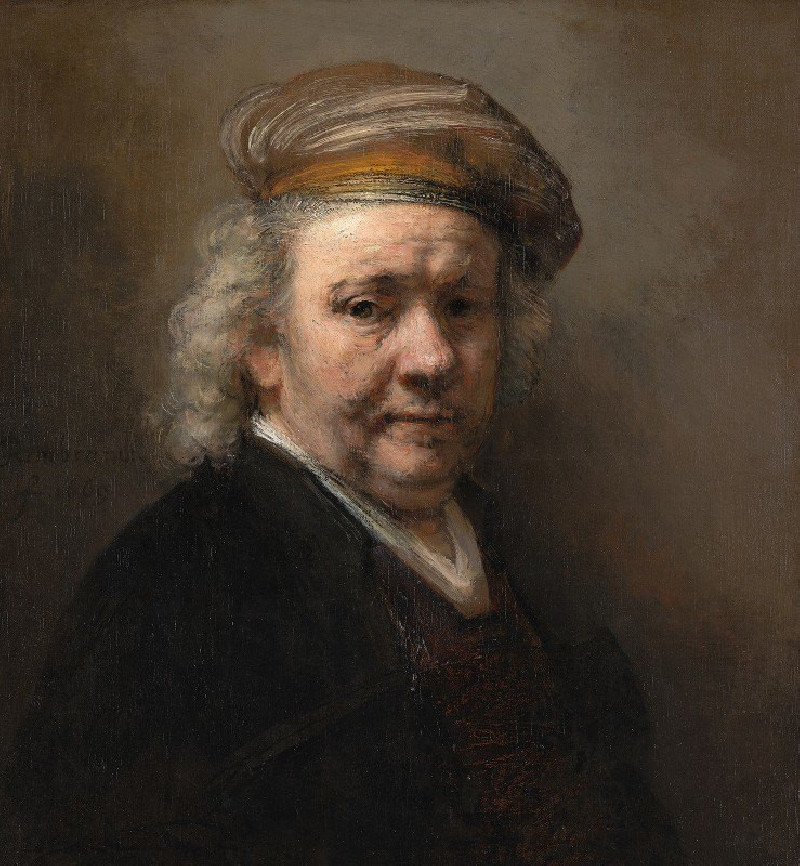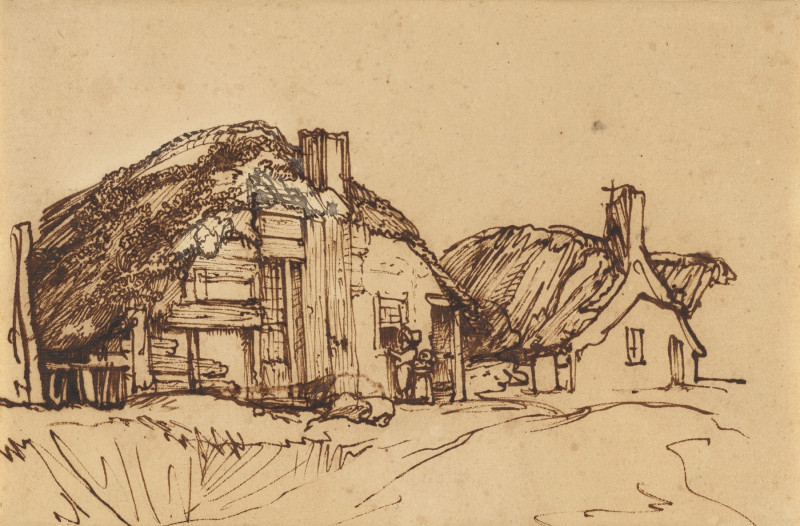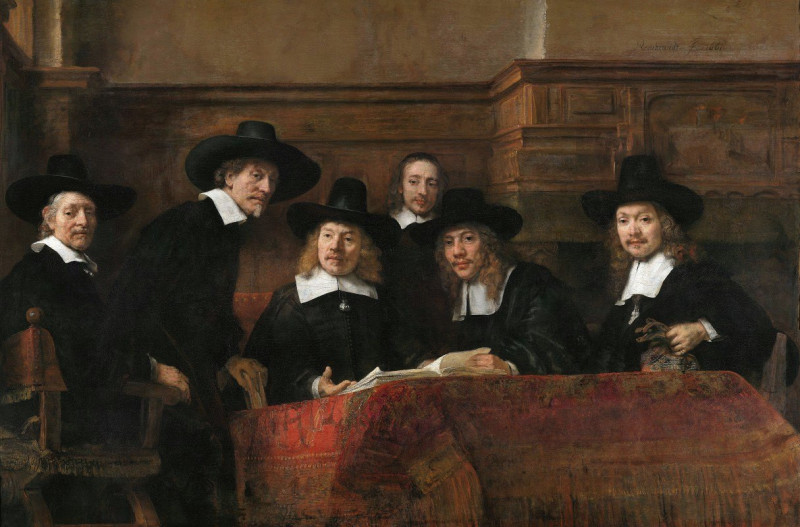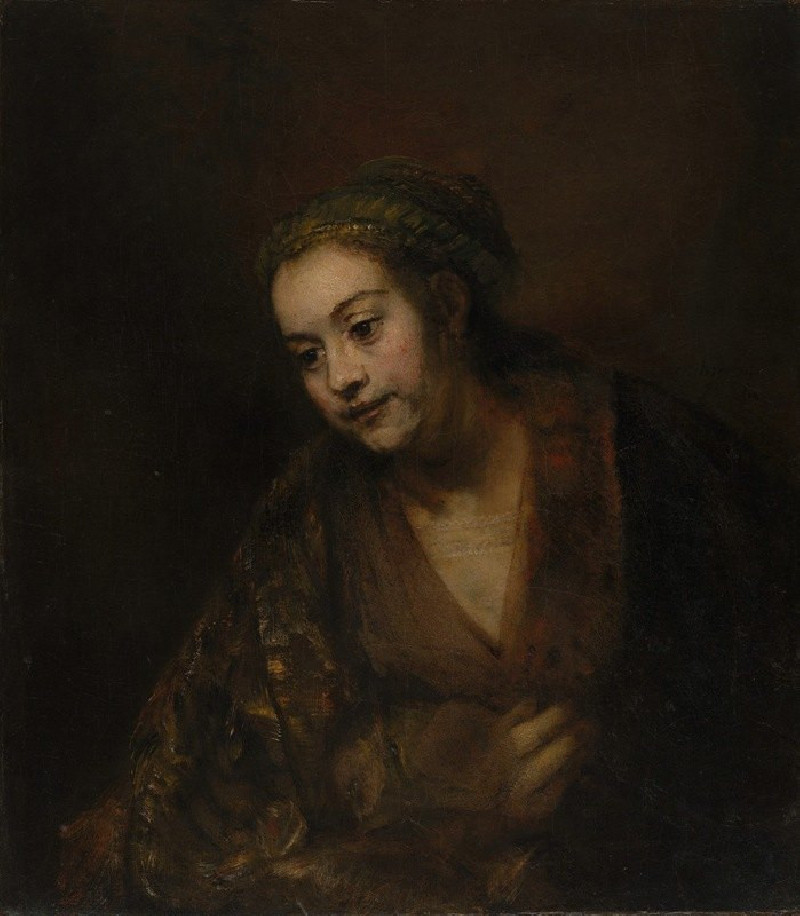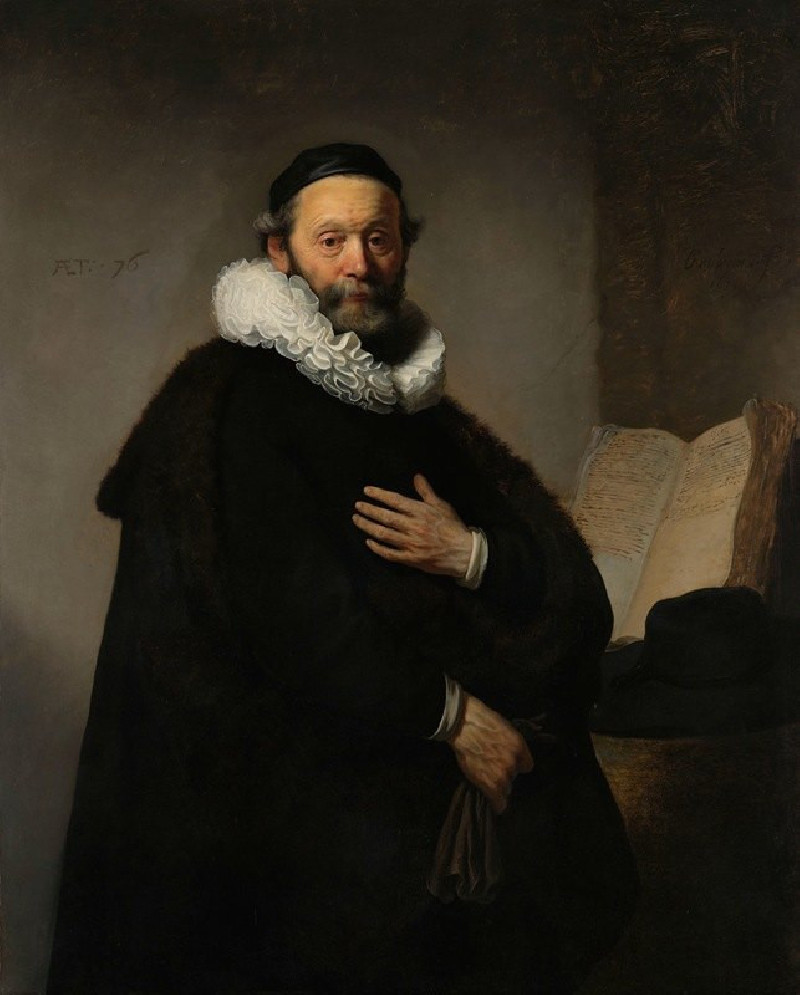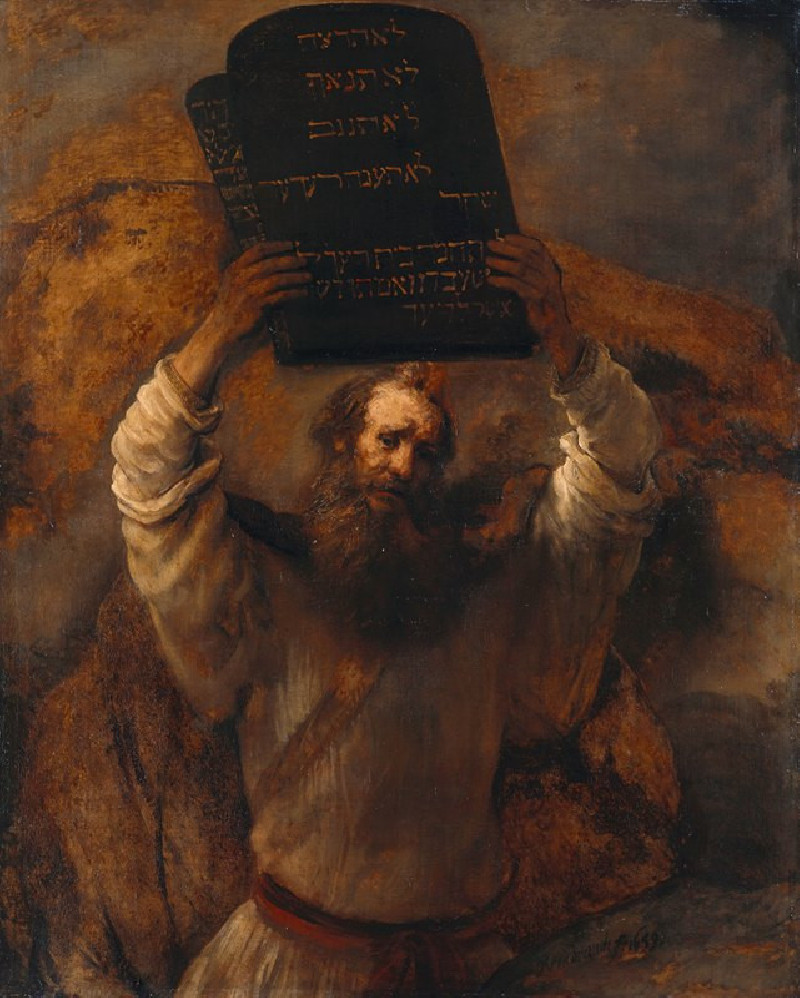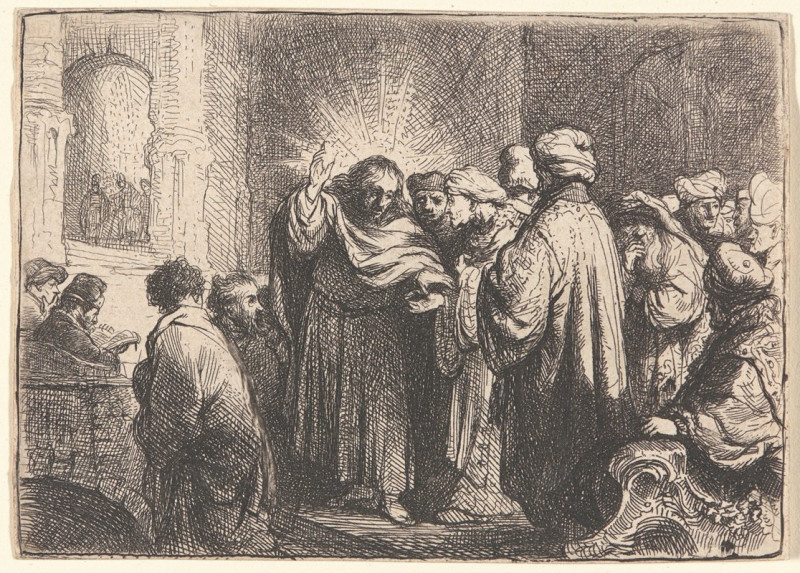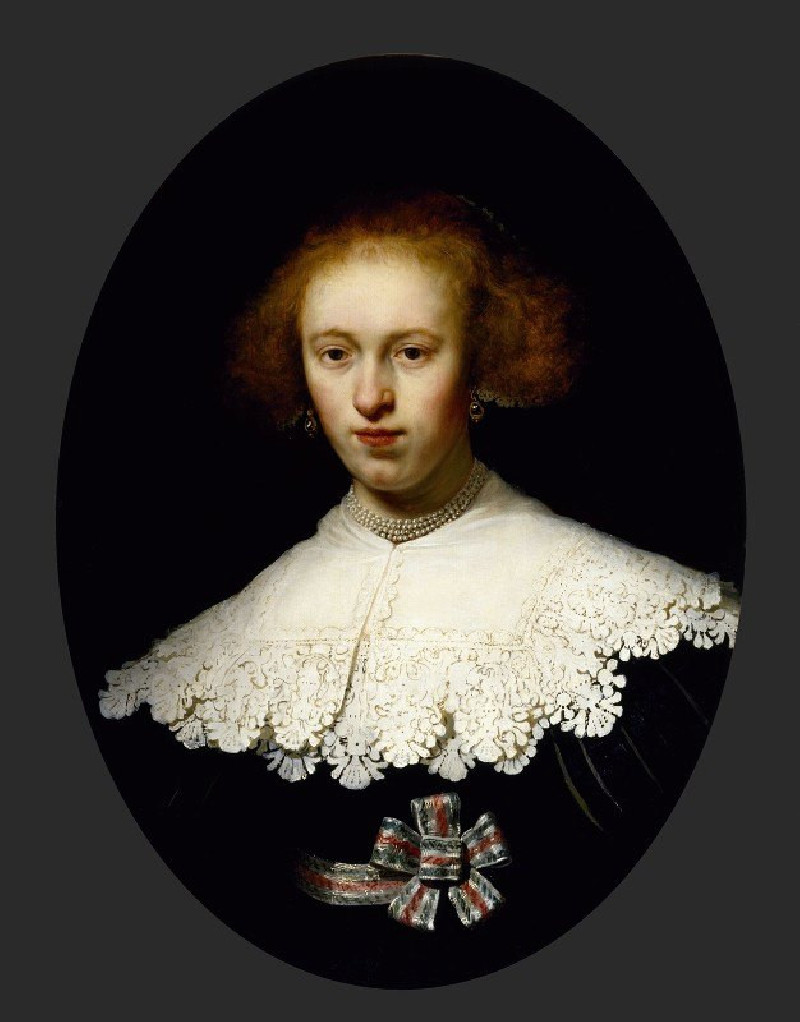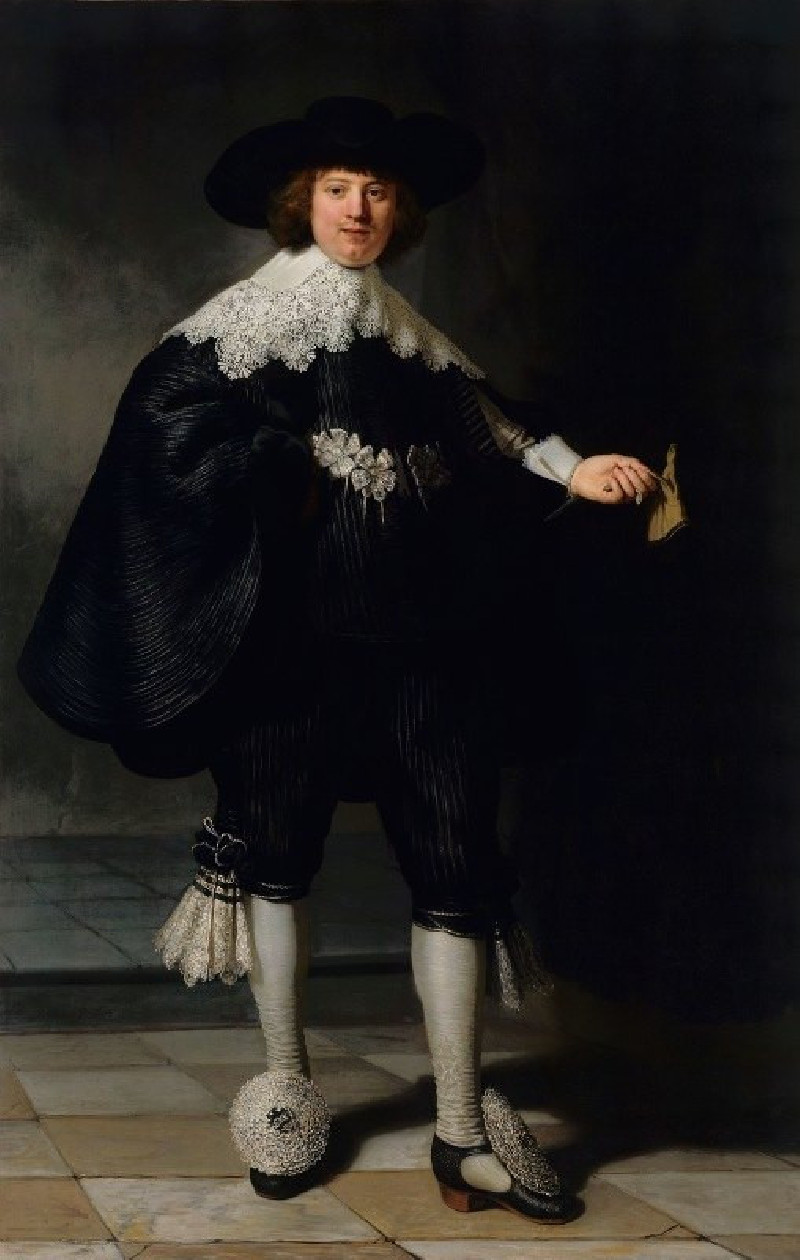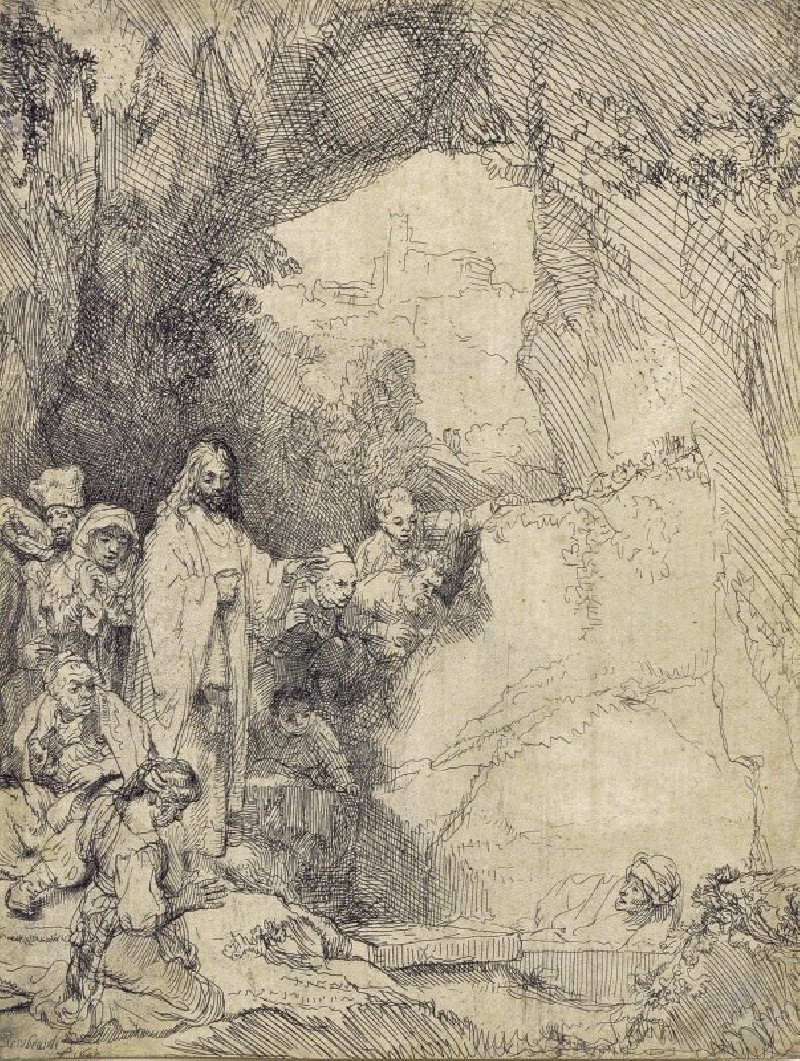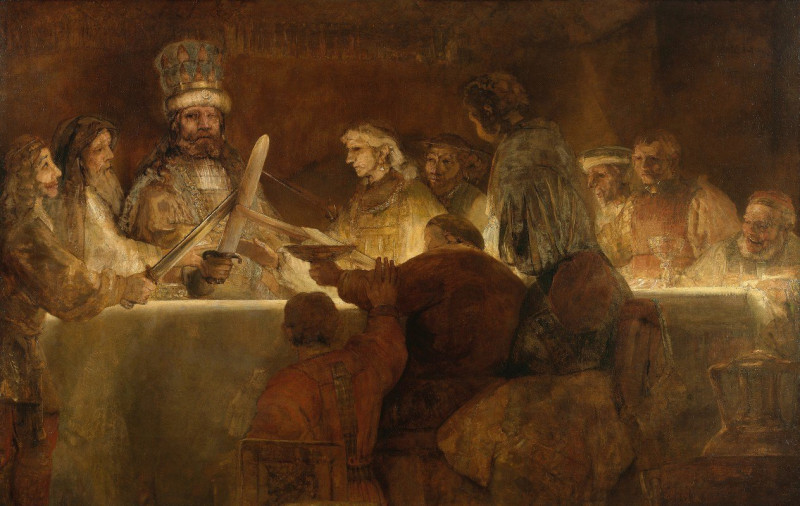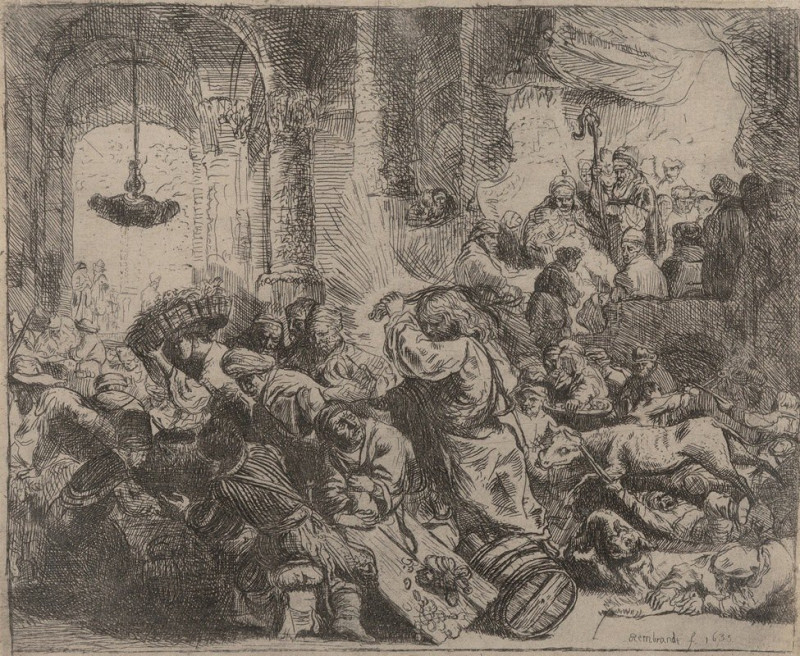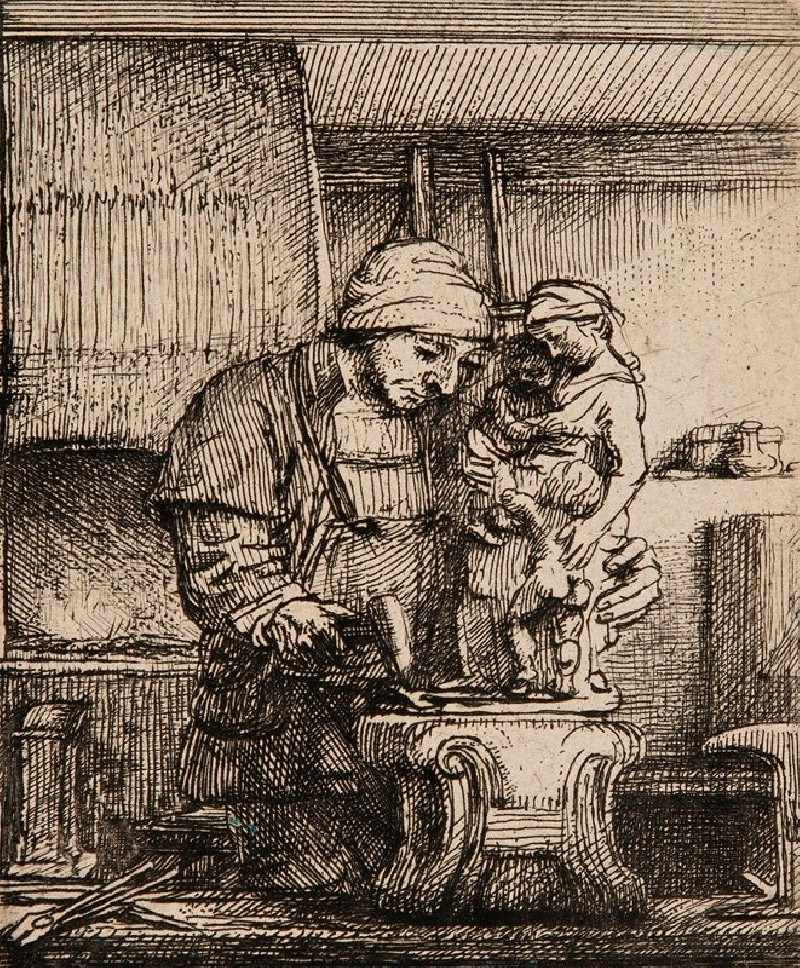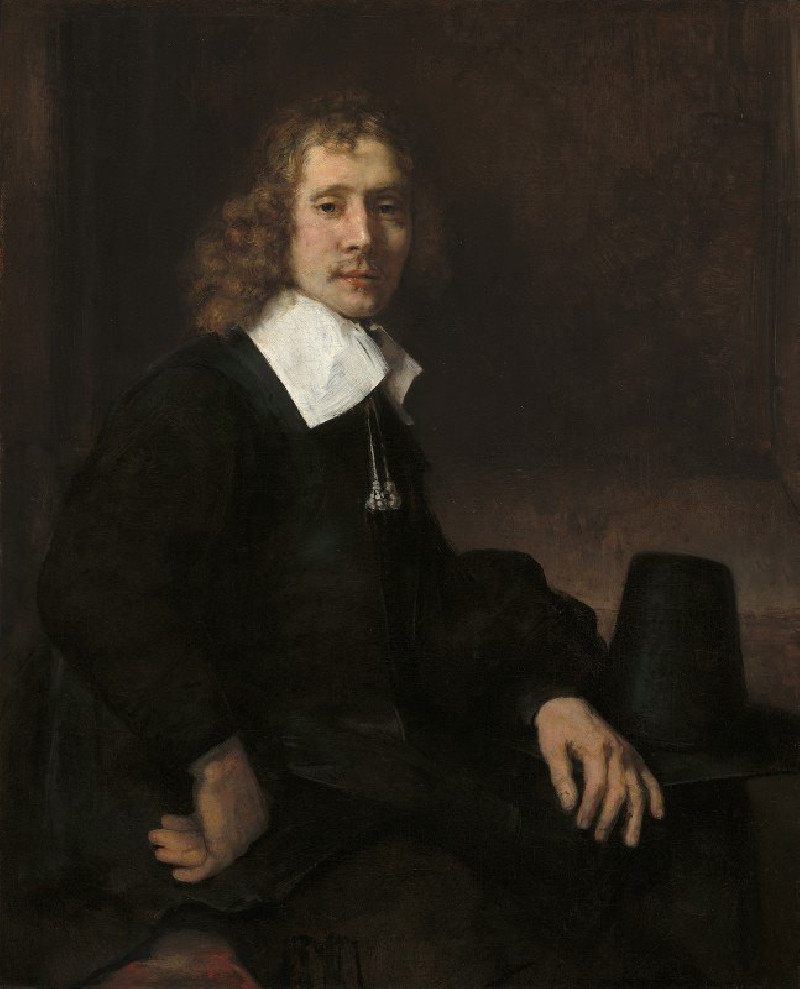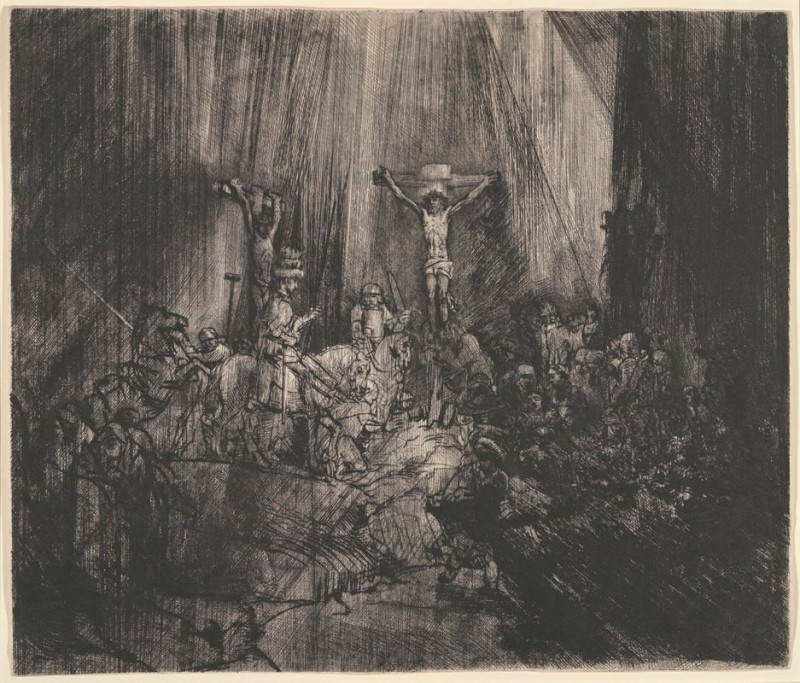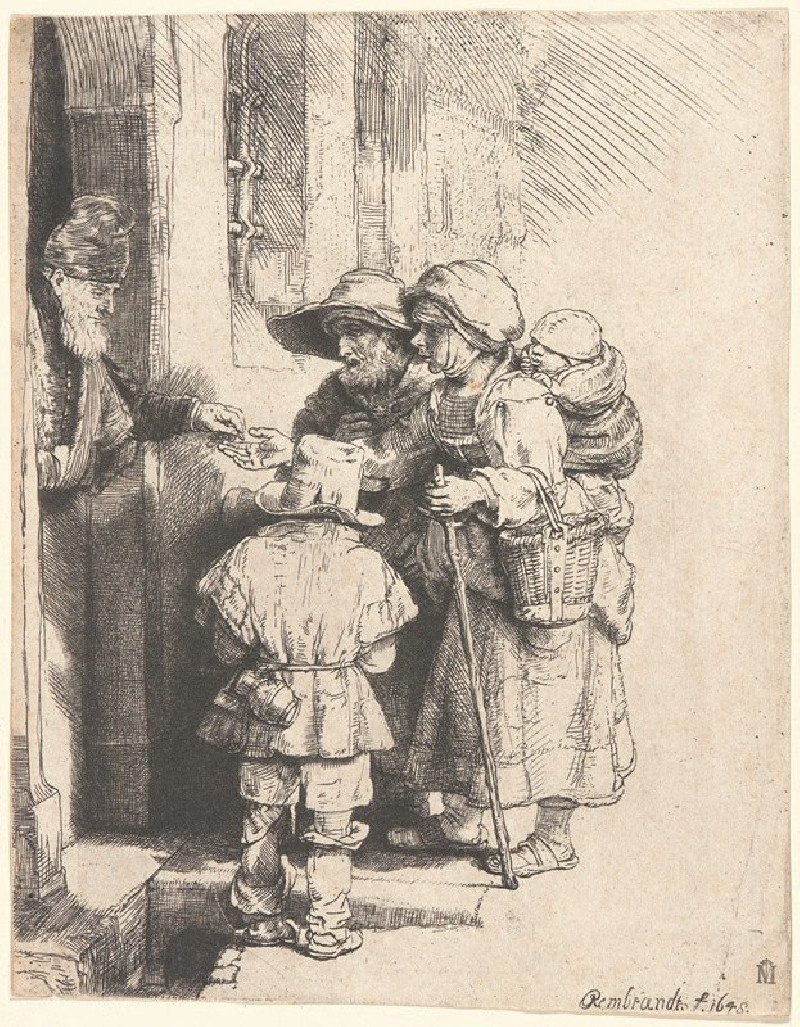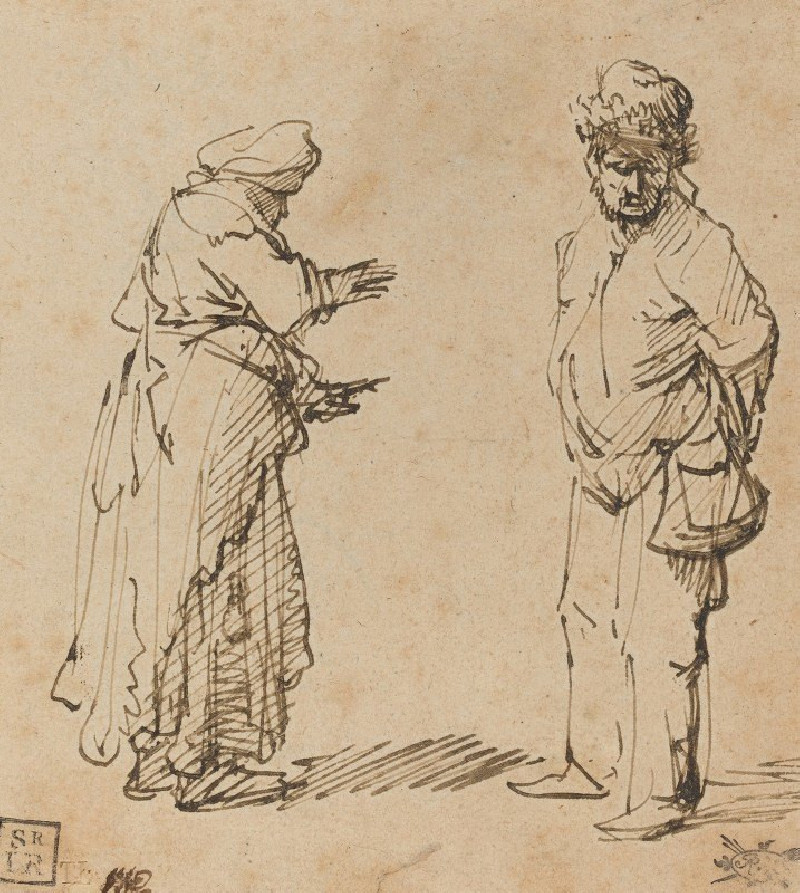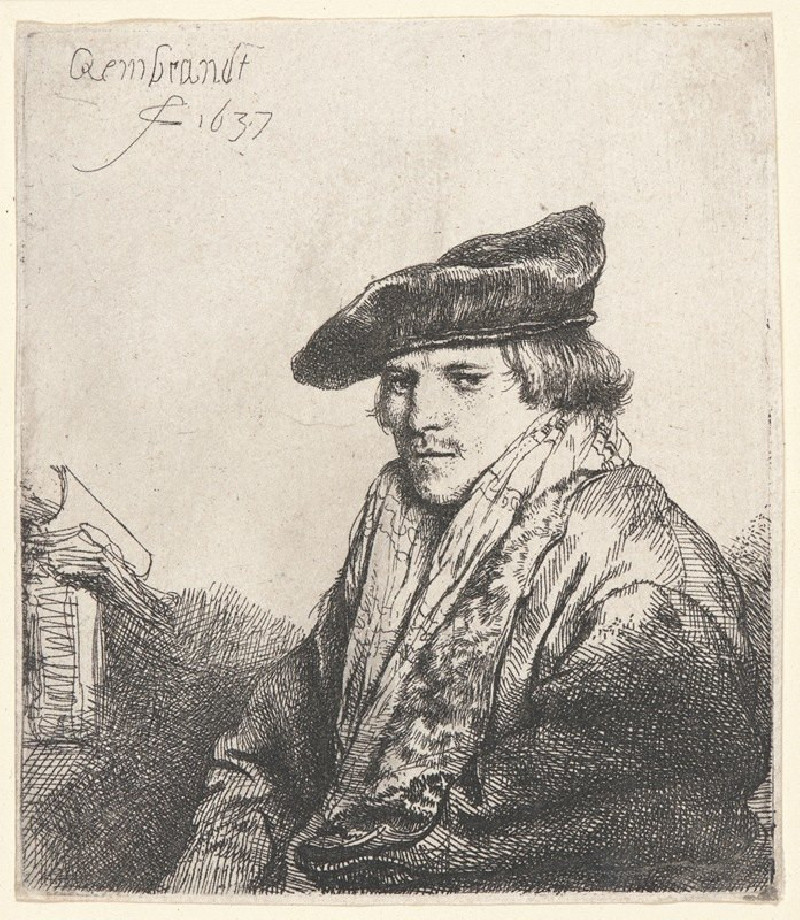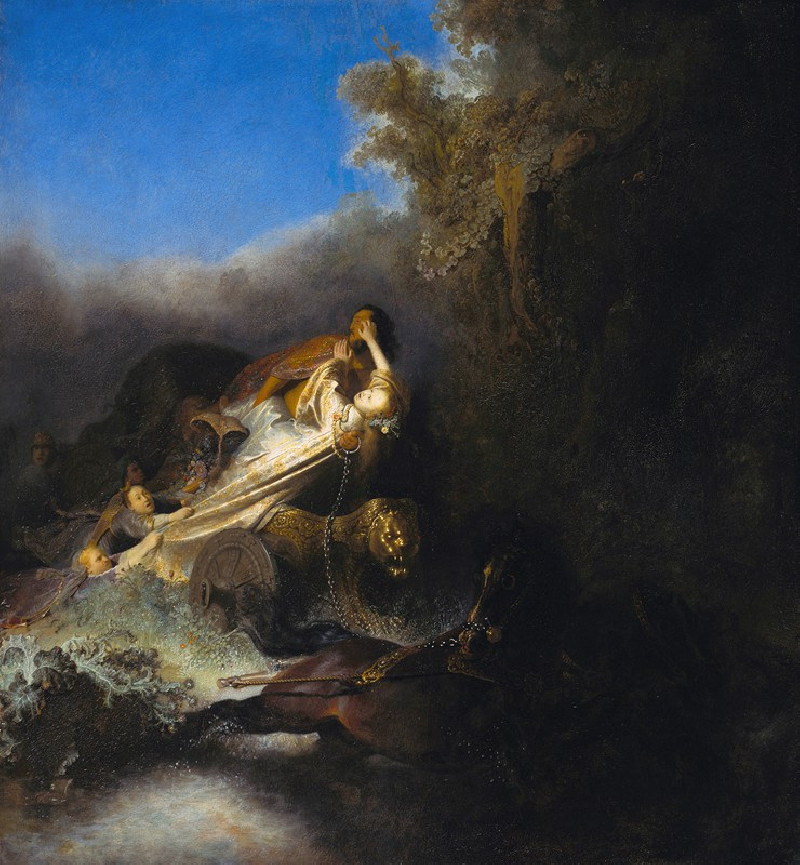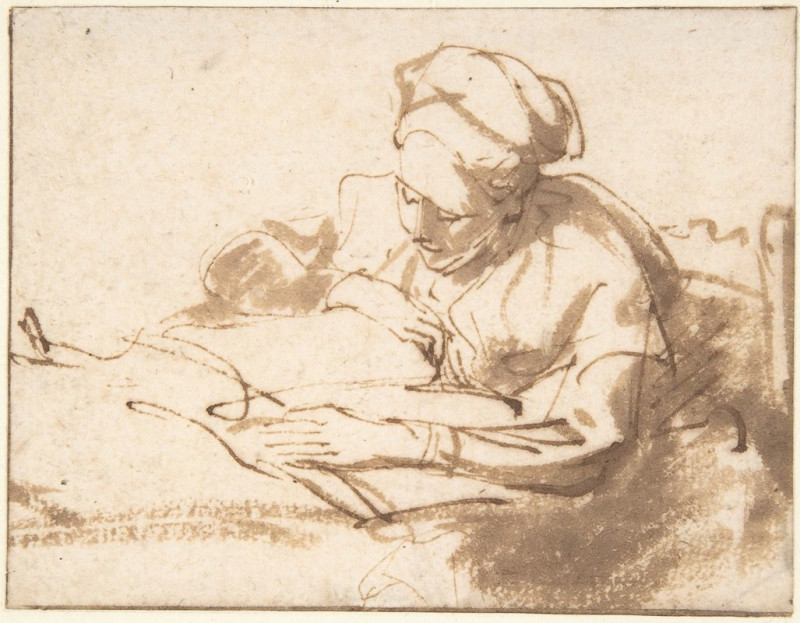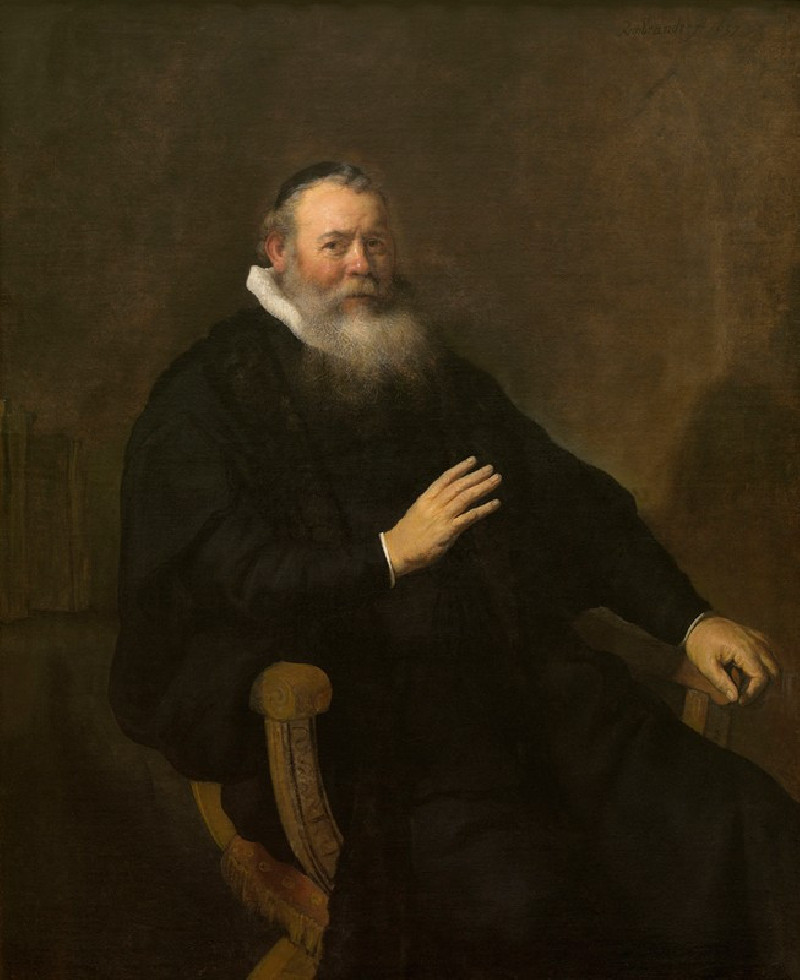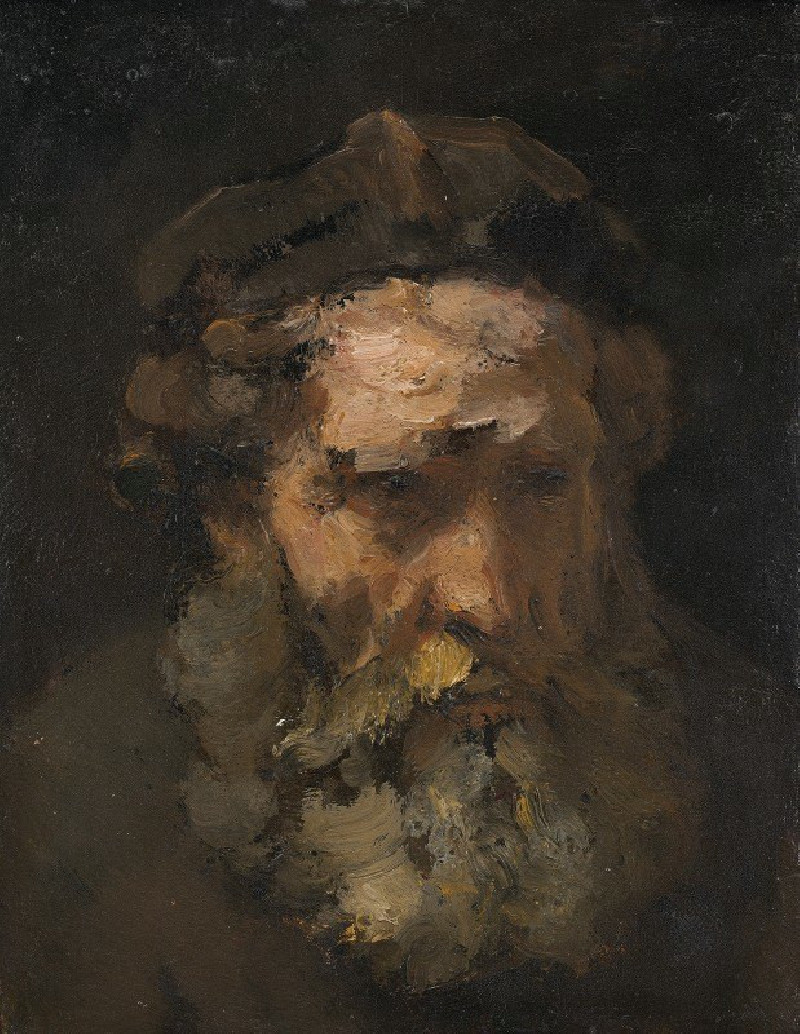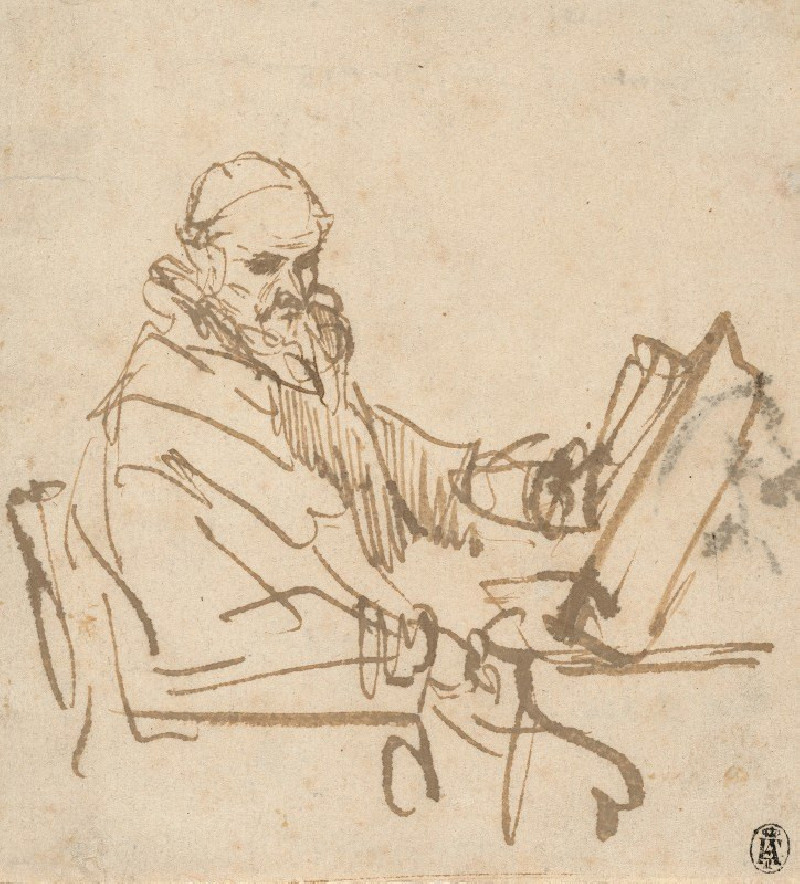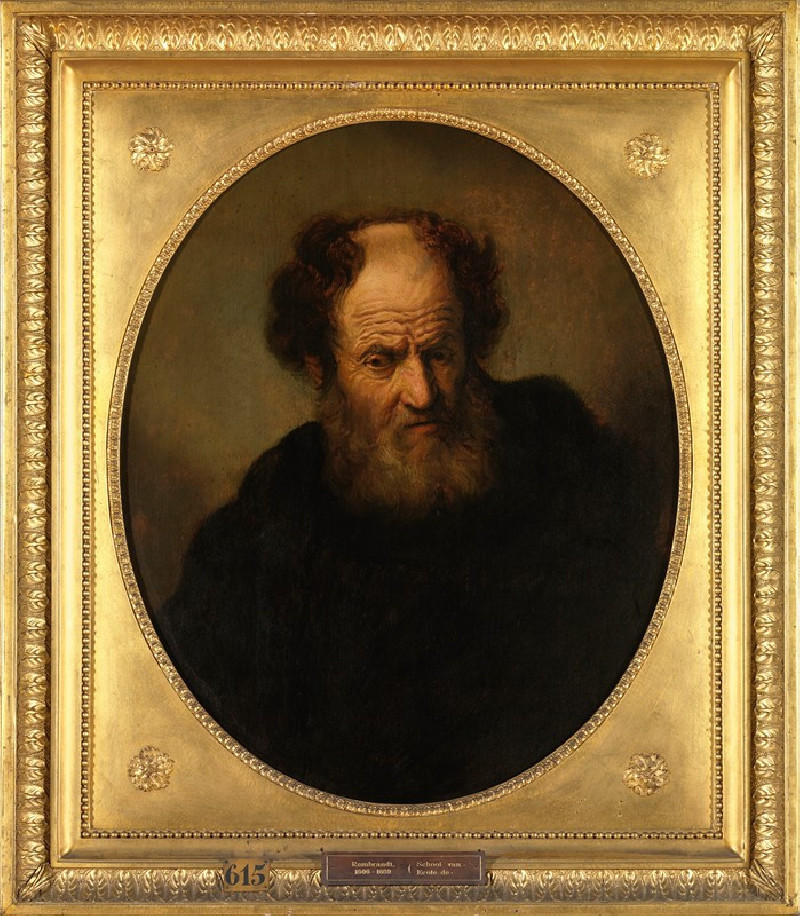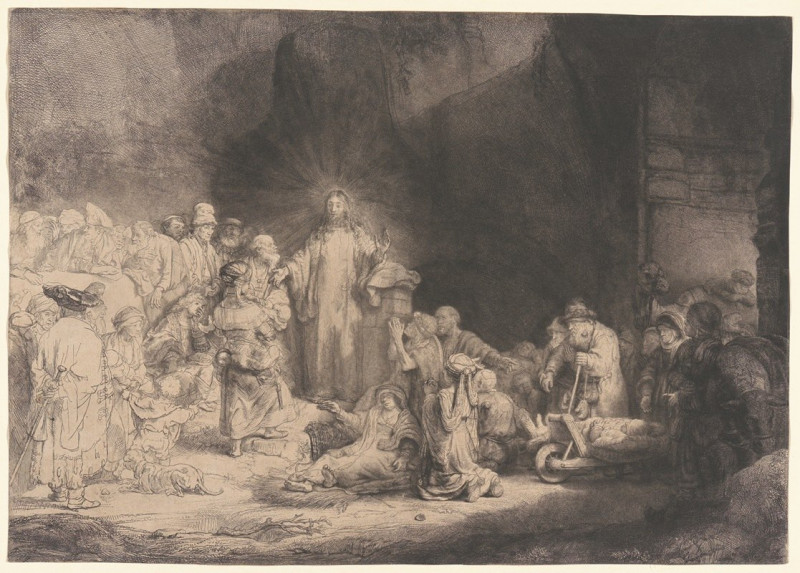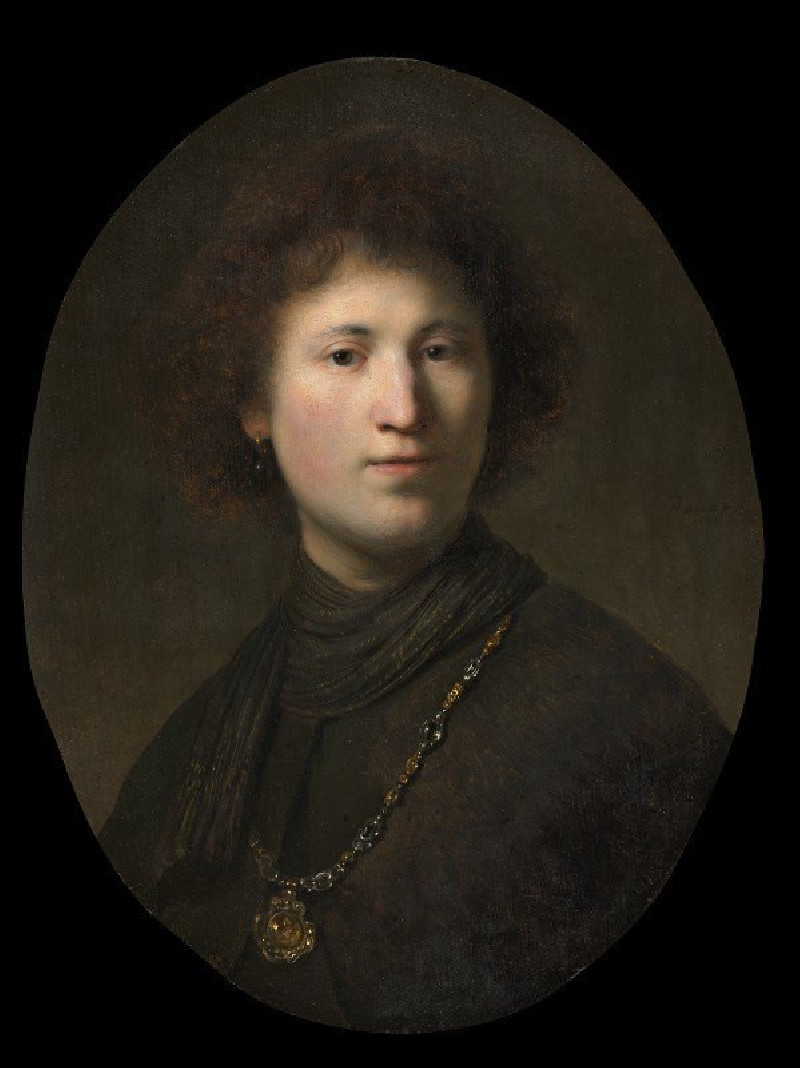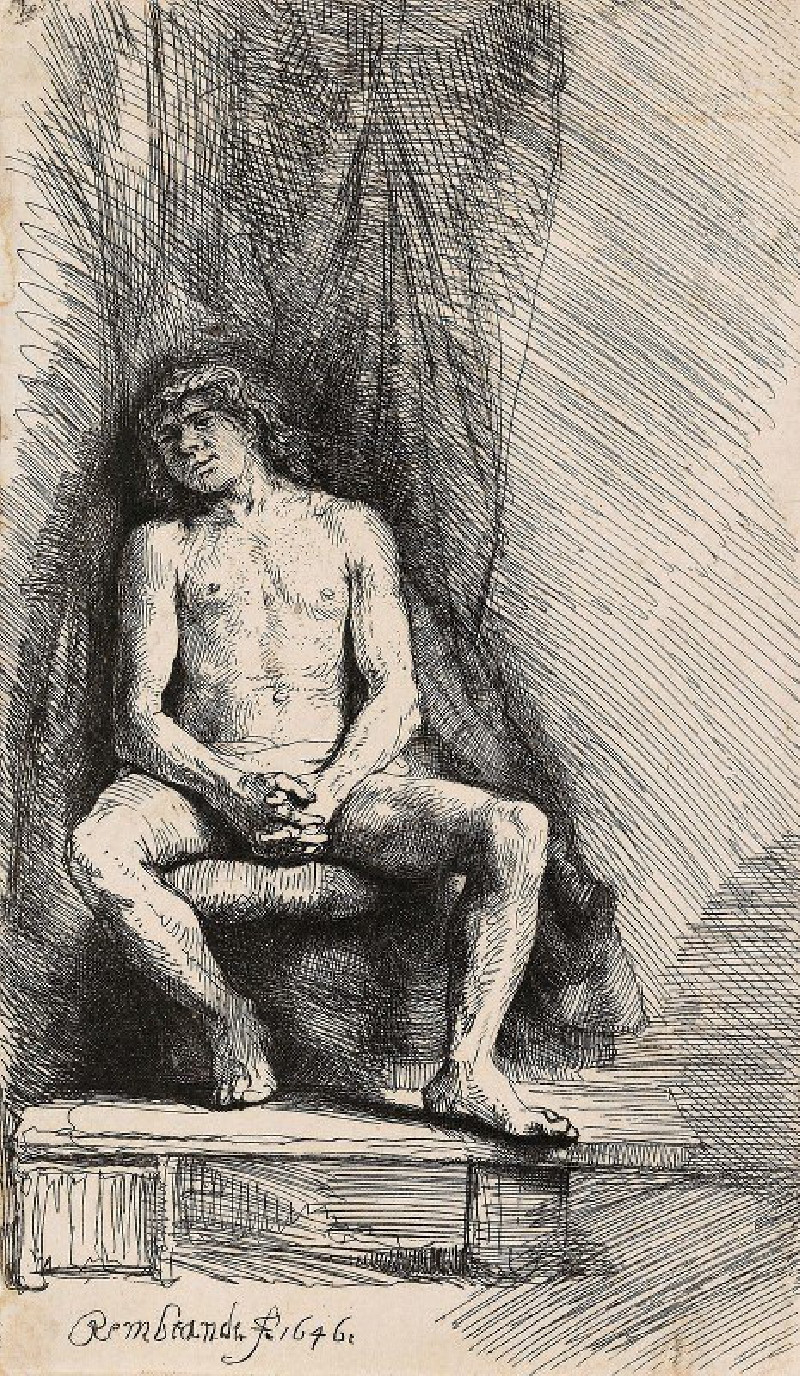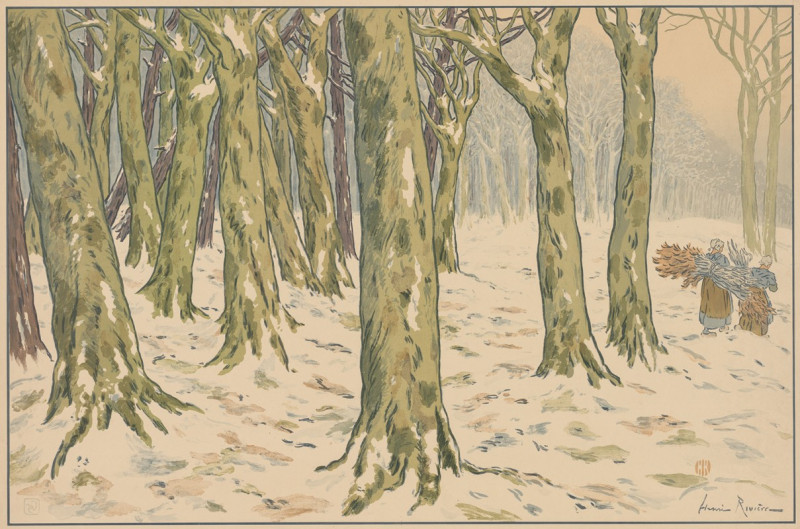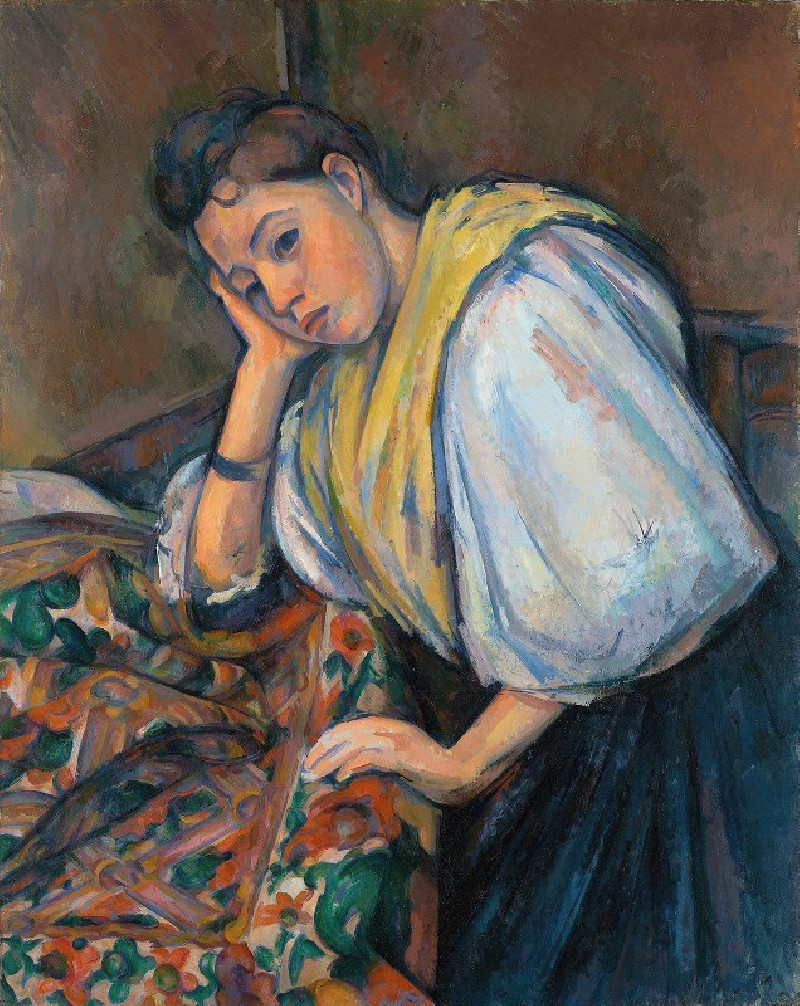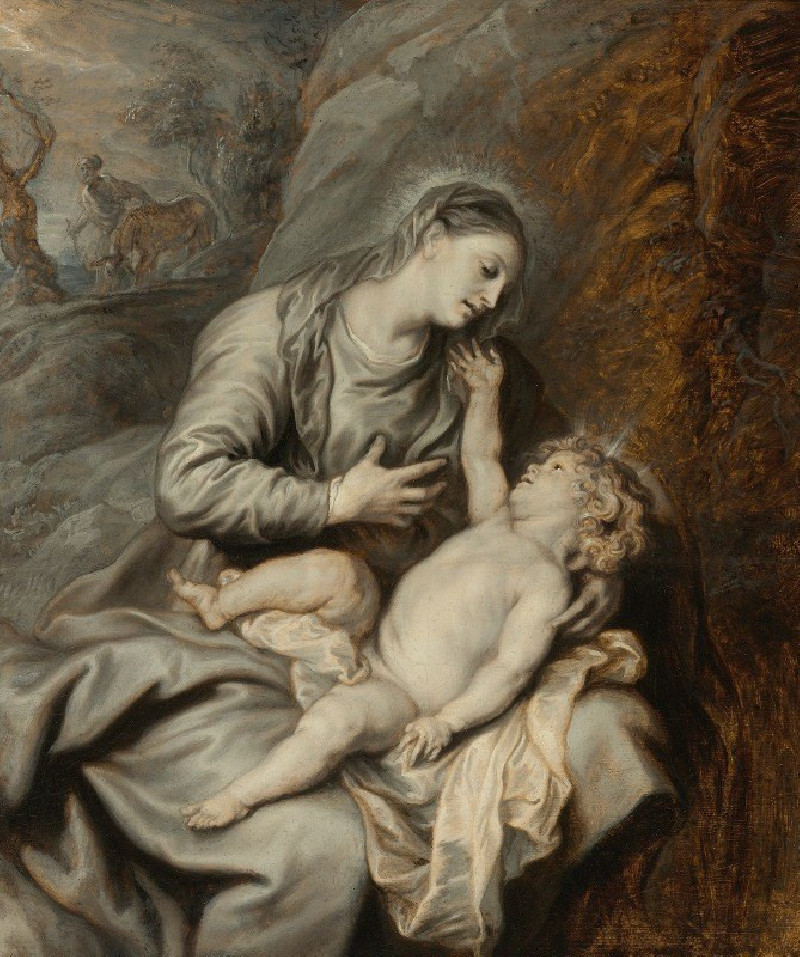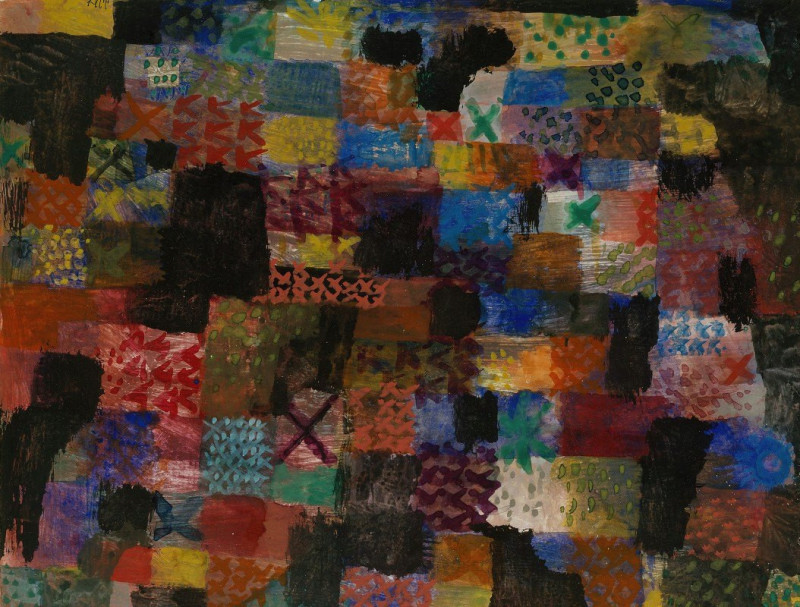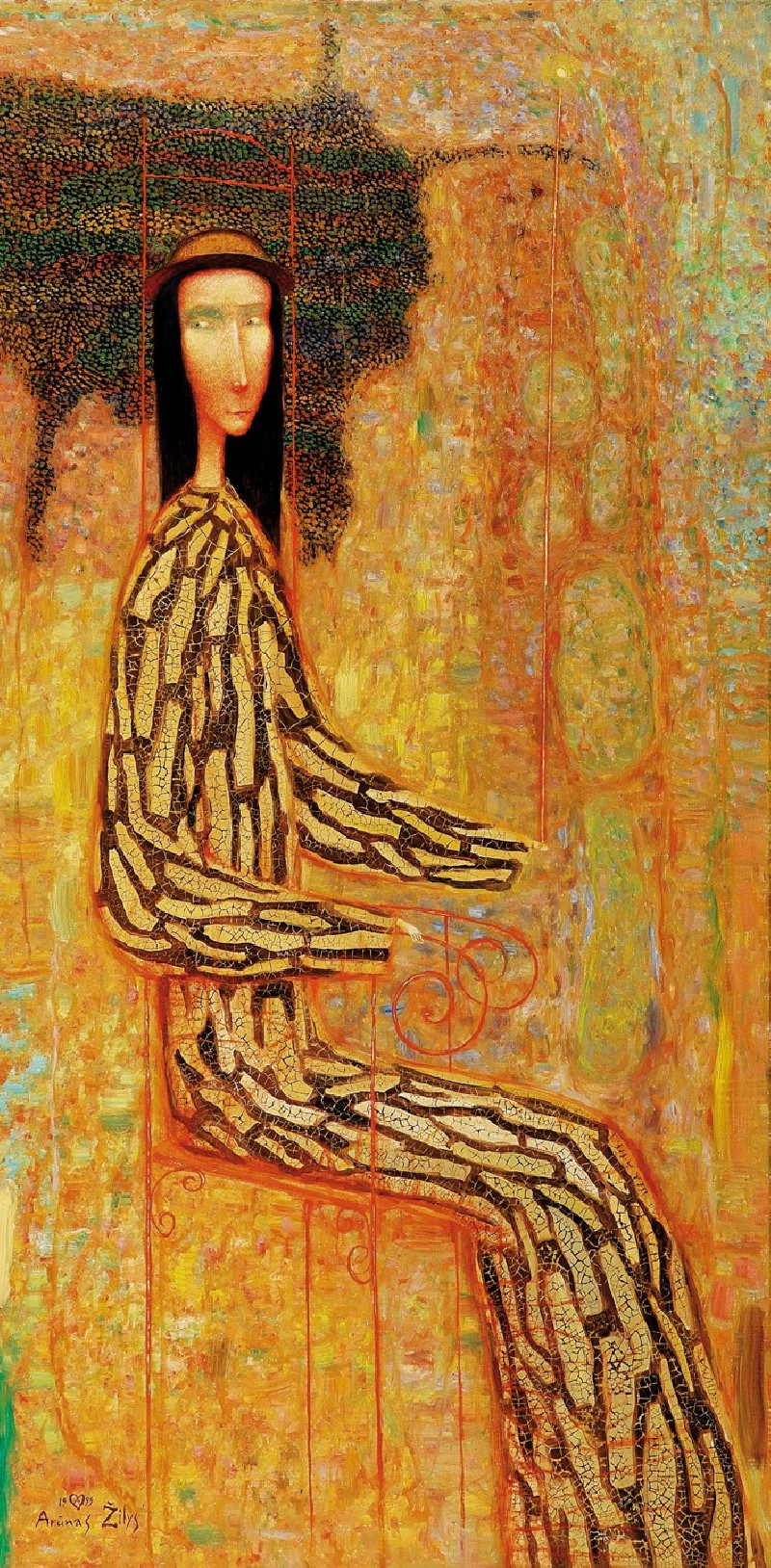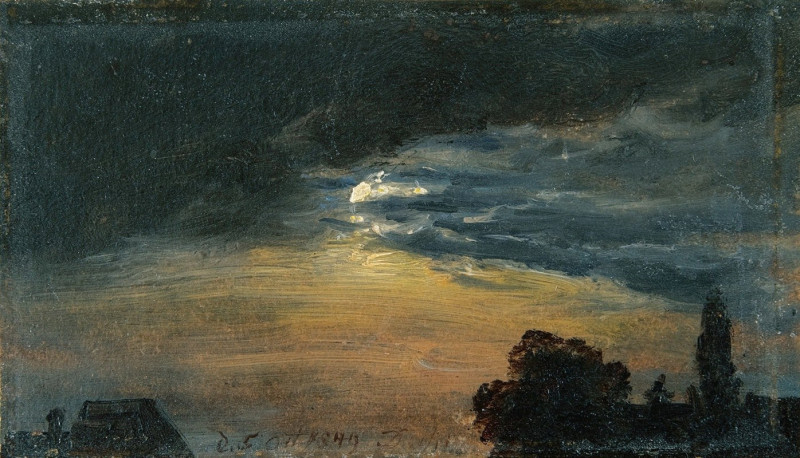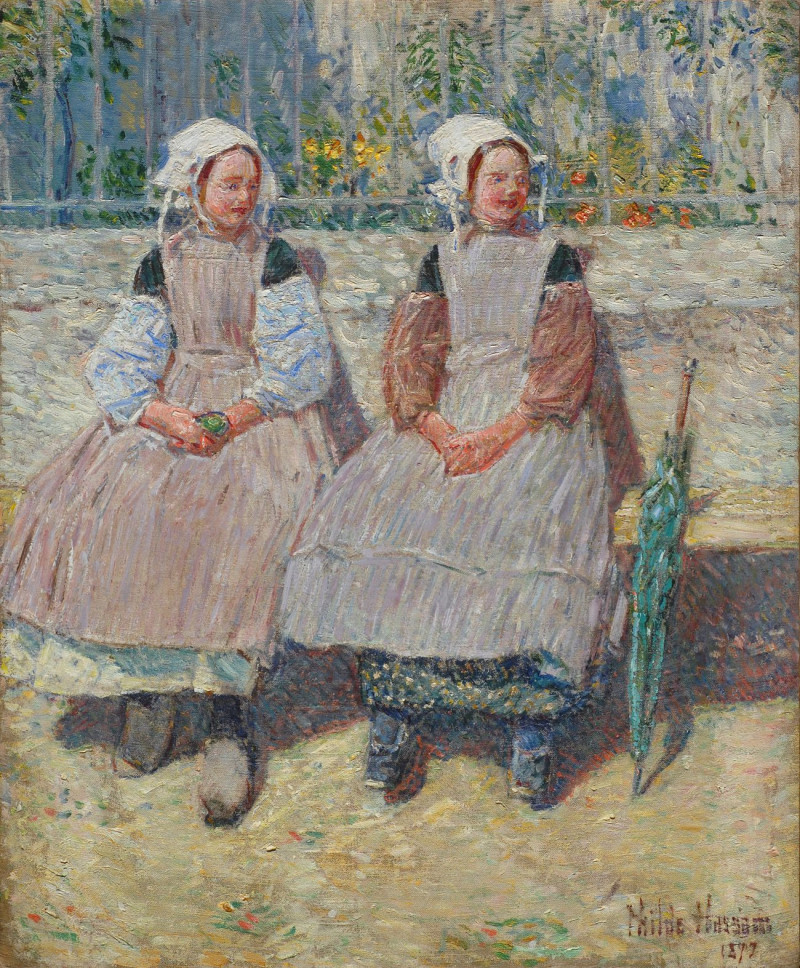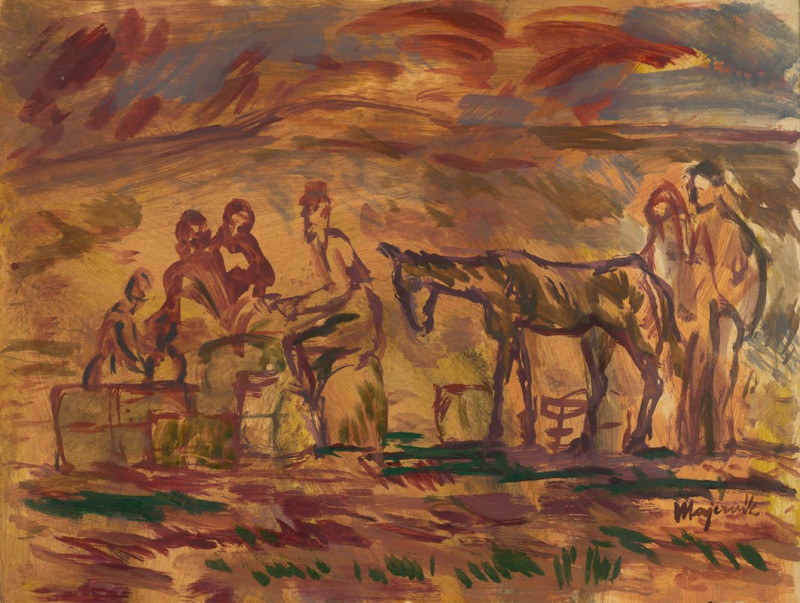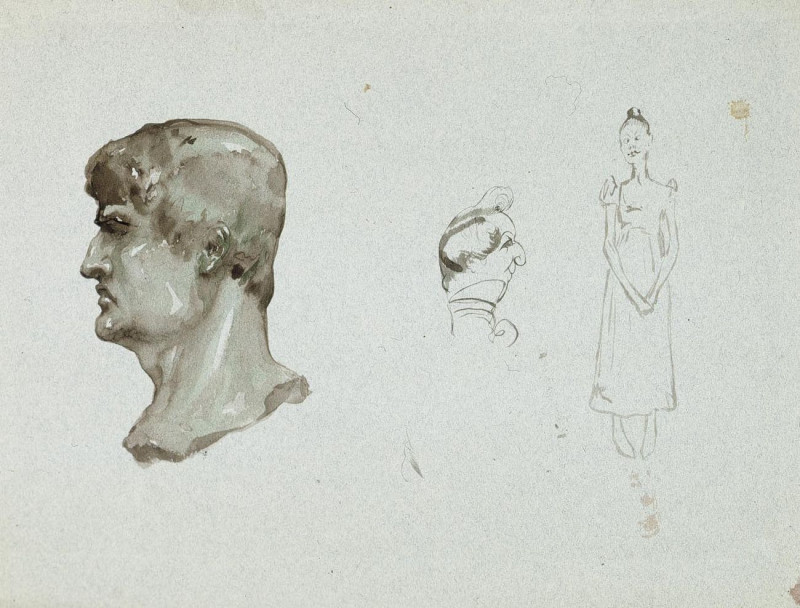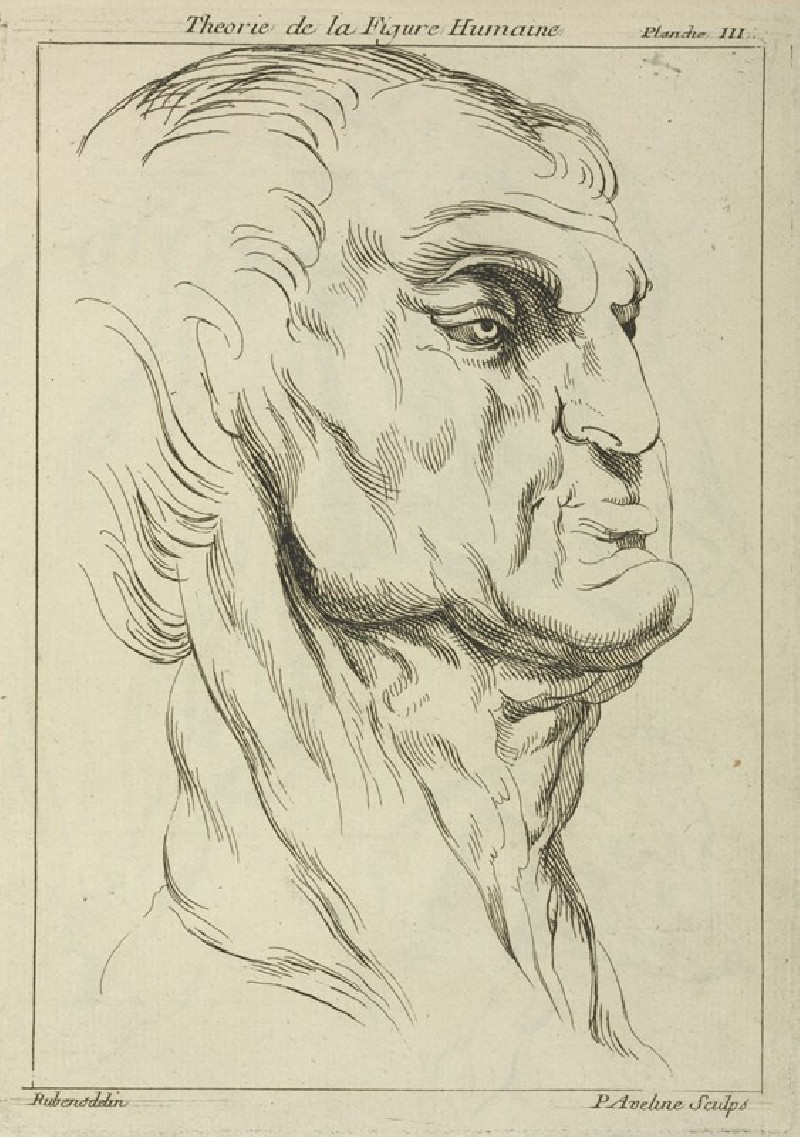Self-Portrait (1669)
Technique: Giclée quality print
Recommended by our customers
More about this artwork
Explore the depths of introspection and mastery in Rembrandt van Rijn's "Self-Portrait (1669)," a profound piece of art that captures the essence of one of the most influential painters of the Dutch Golden Age. The painting, one of the last self-portraits Rembrandt painted before his death, showcases the artist at an advanced age with an expression that conveys both the wisdom and weariness of his years.This oil painting hones in on Rembrandt’s visage with a directness and intimacy that is palpable. Rembrandt chose to portray himself with a solemn and introspective expression, eyes that seem to carry the weight of personal and professional experiences. His face is lit softly, illuminating the creases and lines etched into his skin over time, mapped with the authenticity and emotion that only a self-reflective artist at the end of his career could capture.He is dressed modestly but with hints of his status in the guilded cap and the furrowed, rich texture of his garb, suggesting his blend of artistic brilliance and simple human vulnerability. The background is muted, casting all focus on Rembrandt’s visage and the subtle interplay of shadows and light on his face, a technique that exemplifies his mastery of chiaroscuro.This self-portrait not only delves into the personal narrative of Rembrandt himself but also serves as a powerful representation of human emotion and self-awareness. It encourages viewers to ponder the layers of their own experiences through the reflective gaze of one of the most revered painters in history.
Delivery
Returns
Rembrandt Harmenszoon van Rijn was a Dutch draughtsman, painter, and printmaker. An innovative and prolific master in three media, he is generally considered one of the greatest visual artists in the history of art and the most important in Dutch art history. Unlike most Dutch masters of the 17th century, Rembrandt's works depict a wide range of style and subject matter, from portraits and self-portraits to landscapes, genre scenes, allegorical and historical scenes, and biblical and mythological themes as well as animal studies.

